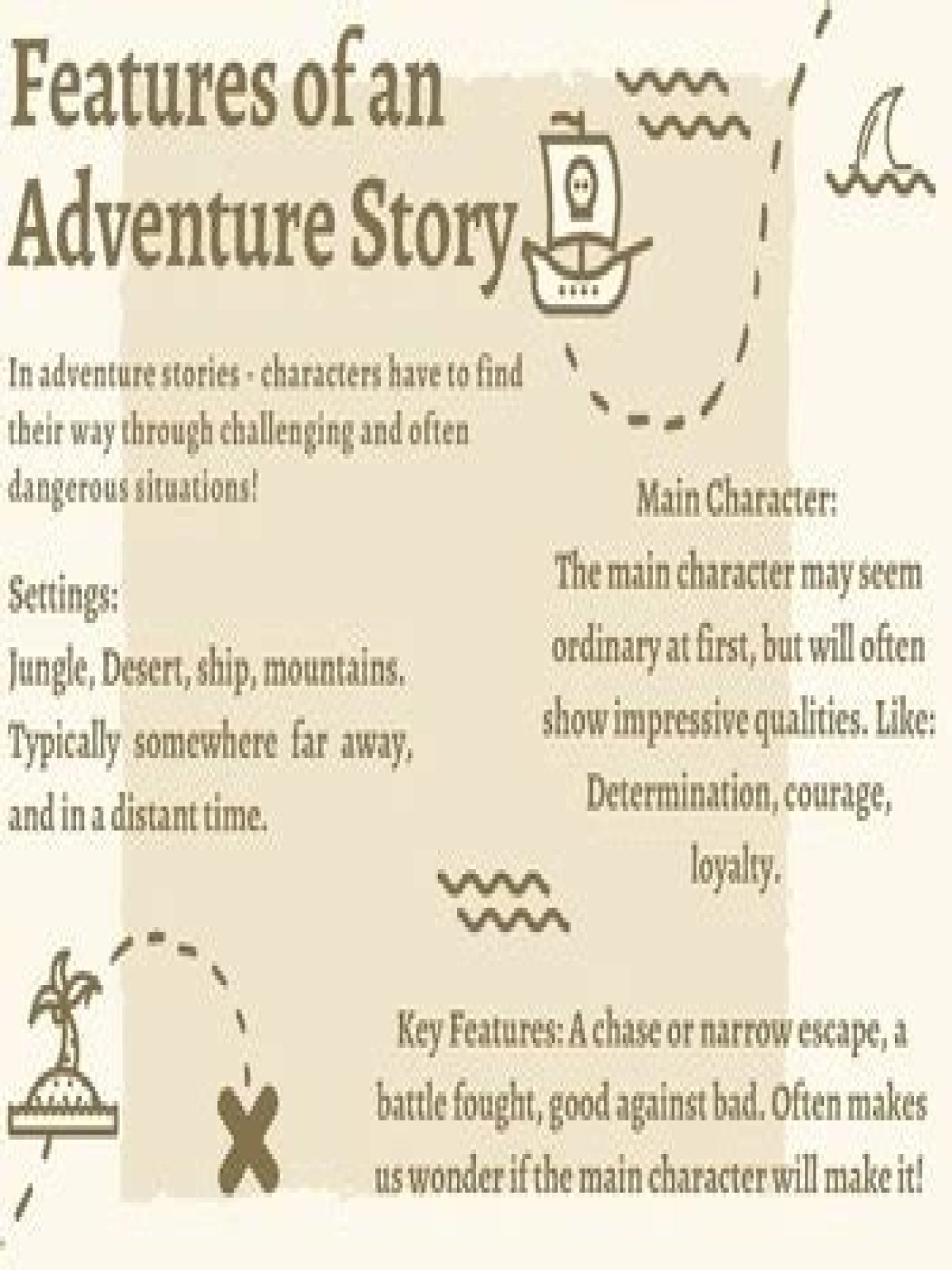What are the key features of an adventure story?
Adventure stories feature physical action and courageous heroes who save others from danger or impending doom. The adventure genre of fiction is fast-paced and usually centers on a protagonist in a dangerous or risky situation.
How do you write a adventure story for kids?
10 Tips for Writing an Adventure Story
- Read popular novels with an adventure theme.
- Structure your story with the basic adventure framework.
- Create a compelling character.
- Introduce a catalyst.
- Have a supporting character.
- Find a setting that elevates the risk.
- Think about pacing.
- Increase the risk.
What does an adventure story include?
Fictional adventure stories for children are tales that often include something exciting and extraordinary, often a quest or a mission. This could include escaping some kind of danger, going on a quest or experiencing something out of the ordinary.
How do you write a story Grade 3?
A Step‑by‑Step Guide to Helping Your Child Write a Story
- Step 1: Think of an idea. A good place to start is by reading a book together.
- Step 2: Create a character and a setting.
- Step 3: The Beginning.
- Step 4: The Conflict.
- Step 5: The Turning Point.
- Step 6: The Resolution.
- Step 7: The End.
What are three types of adventure stories?
There are many types of adventure but their meanings are obvious. You could see most of them by exploring Netflix—types such as fantasy adventure, science-fiction adventure, supernatural adventure, and historical adventure.
What are good adventure story ideas?
Adventure Story Writing Ideas & Prompts for Kids
- Imagine that you could fly.
- Tell us about your favorite pet and the fun adventures it has while you are at school.
- Write a story about a robot in the future.
- What do you want to be when you grow up?
- Imagine you are in a forest and the trees can talk.
What is year 3 narrative unit 3?
Year 3 Narrative Unit 3 – Adventure and mystery Adventure and mystery (4 weeks) This is the third in a block of four narrative units in Year 3. It builds on children’s experience and knowledge from the previous two units. The unit can be linked to other curriculum subjects and themes. Phase 1
How do you write an adventure story?
Plan and write an extended adventure story divided into chapters or paragraphs. Identify a problem, events and resolution and use typical characters and settings. Include elements from reading, such as description, action sequences, dialogue.
What is storystory writing KS2?
Story writing KS2 builds your student’s imagination in the classroom. Explore creative story writing with our many resources and activity pack to get their imagination flowing! Writing stories in KS2 can help to develop a student’s writing ability.
